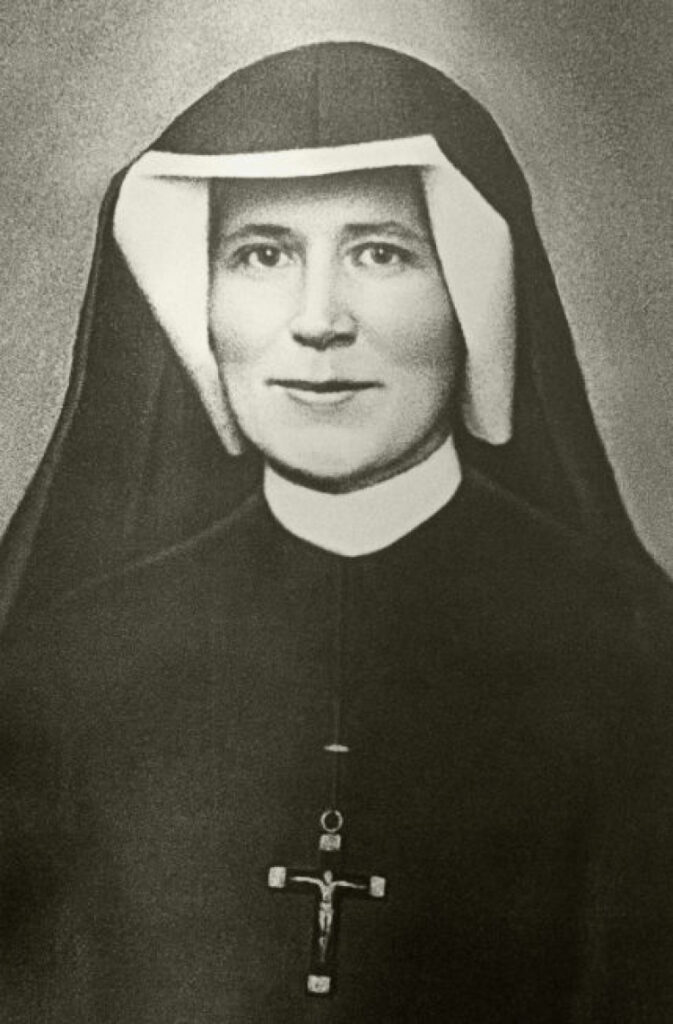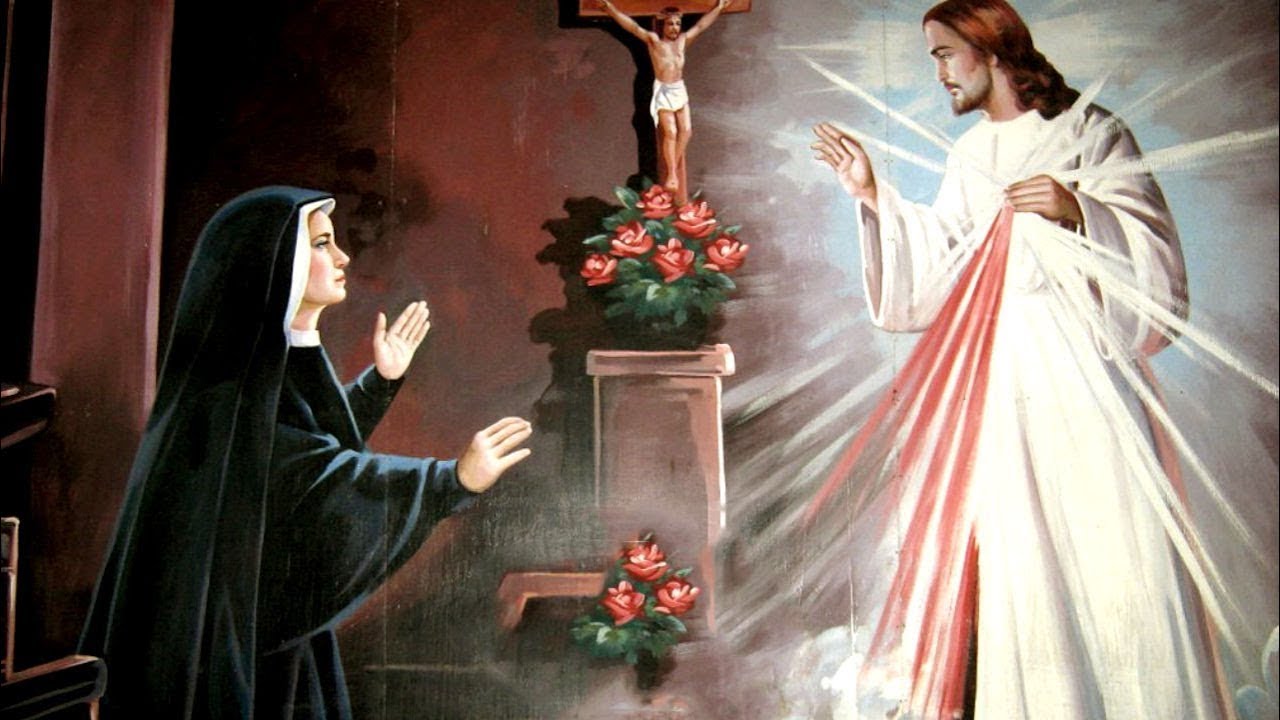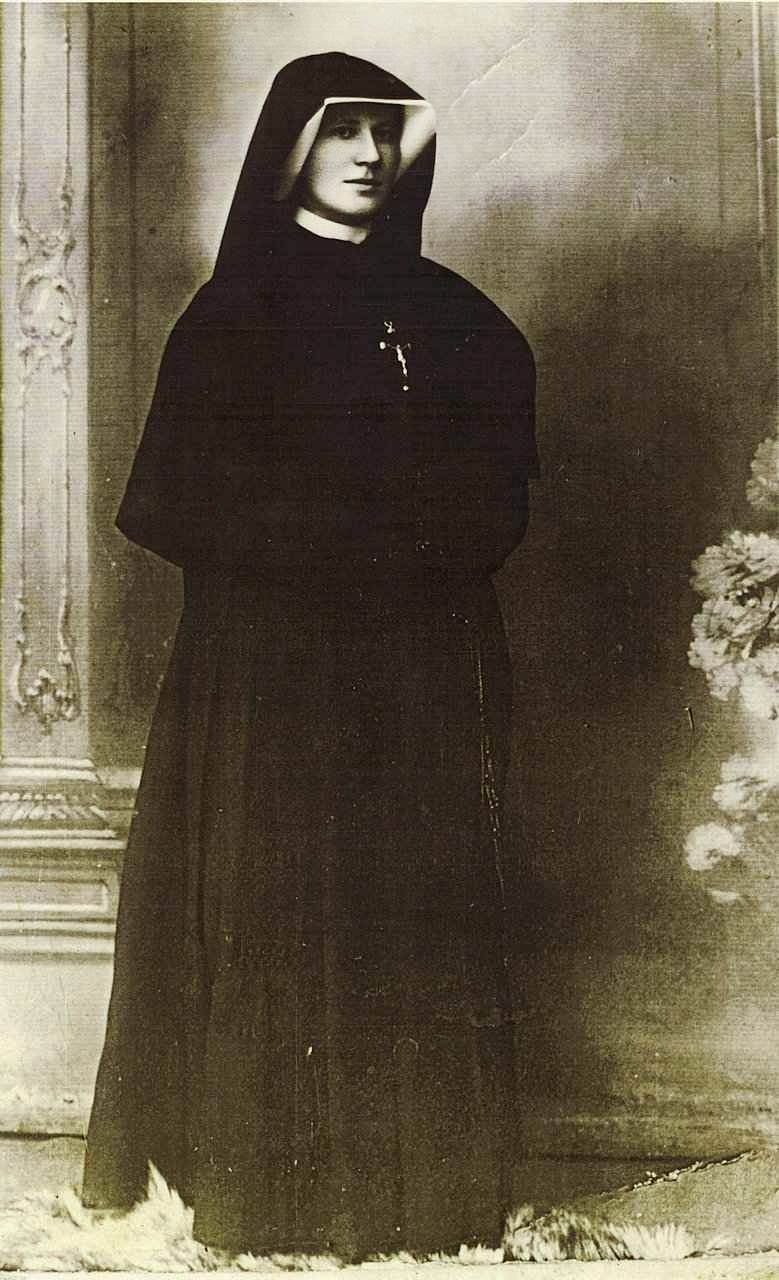Helena Kowalska was born in the village of Glogowiec, Poland, on August 25, 1905 as the 3rd of 10 children, to a poor and religious family.
She first felt a calling to the religious life when she was just 7 years old and wanted to immediately join a convent, but her parents refused. Instead, at the age of 16, she became a housekeeper to wealthy families to help support her and her parents.
When she was 19, she experienced her 1st vision of Jesus while at a dance with her sister. She saw Him suffering and went to the Cathedral where he instructed her to leave for Warsaw immediately to join a convent.
She departed the next morning and approached many different convents in Warsaw but was turned away having been judged on her appearances and sometimes poverty. Finally, the Congregation of the Sisters of Our Lady of Mercy took her on the condition that she could pay for her own religious habit. Working as a housekeeper, she saved her money and made deposits to the Convent. She took her vows at the age of 23 and chose the religious name of Sister Maria Faustina. She found a priest, Blessed Michael Sopocko, to be her spiritual director.
In 1931, she was visited by Jesus again, who presented himself as the “King of Divine Mercy”, clothed in a white garment, with one had raised in blessing, and the other touching the garment at His chest. At the opening of the garment, two large rays, one red and the other pale, descended from His heart signifying water and blood. He asked her to paint an image according to the pattern she saw with the inscription; “Jesus, I trust in You.” He also wanted the Divine Mercy image to be “solemnly blessed on the 1st Sunday after Easter; that Sunday is to be the Feast of Mercy.”
She did not know how to paint and asked for help but received none. 3 years later, in 1934, Fr. Sopocko helped her find an artist, Eugene Kazimierowski, to fulfill the request.
In her diary, “Divine Mercy in My Soul”, she wrote of the her many visions and conversations with Jesus telling of the graces that would pour out to anyone who prayed before the image.
For several years she was ill with advanced tuberculosis, suffering from much pain and fatigue. She died in 1938 at the age of 33.
The image was hung next to the main altar in the Church of St. Michael which was adjacent to the Church of the Holy Spirit. It was closed because of war and soviet occupation. It was moved and changed custody several times over the decades. Eventually it was brought back to Lithuania in secret and given to the Church of the Holy Spirit. In the 2000s, its significance was rediscovered and after a professional restoration, it was rehung in the nearby Church of the Holy Trinity in 2005, which is now the Shrine of Divine Mercy.
She is the patron saint of the Jubilee of Mercy as proclaimed by Pope Francis.
Her feast day is October 5.
For God’s Glory.



